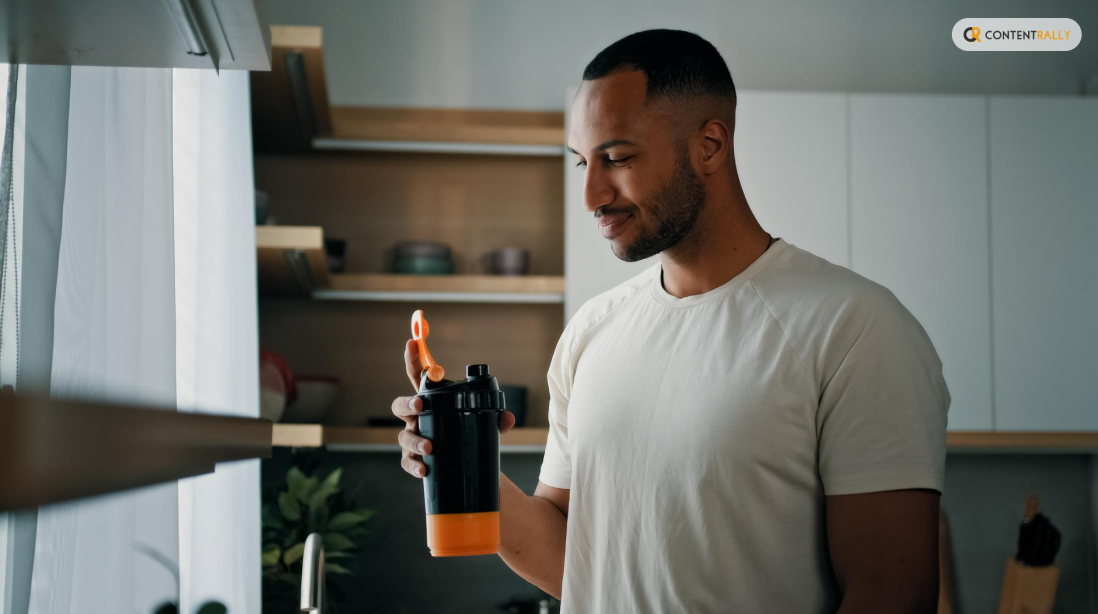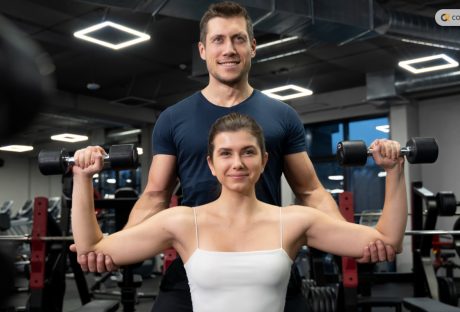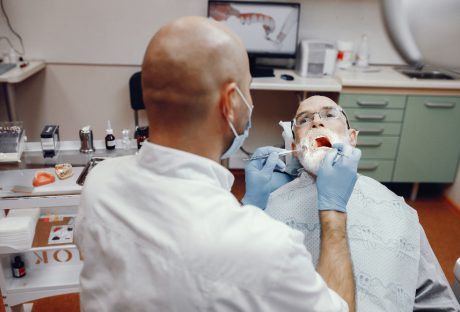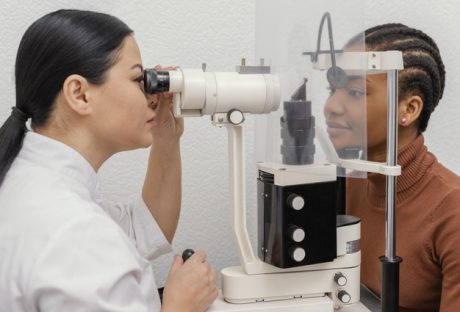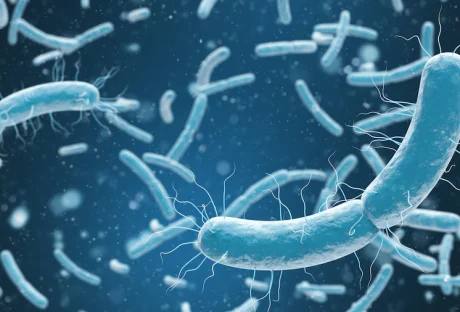How long does pre workout last? – Once you consume pre-workout, its effects last for 3 to 6 hours in your body. Basically, the job of a pre-workout is to improve your physical and mental performance during exercise. If you want to consume pre-workout, you have to consume it as energy shots or as a powder that you mix with water.
In this article, you will learn about how long a pre-workout lasts. Apart from that, you will also learn about the key factors that influence a pre-workout’s duration. Moreover, this article will also explain how to maximize the duration of pre-workouts. Hence, to learn more, read on to the end of the article.
How Long Does Pre-Workout Last?
Generally, a pre-workout has a noticeable effect for 1 to 2 hours when you are working out. However, the ingredients remain in your body for around 4 to 6 hours. In fact, the ingredients of a pre-workout supplement remain in your system. Basically, it depends on the amount of caffeine it contains.
Here are a few points you must consider about pre-workout duration:
- Peak Effect: For a pre-workout, after you consume it, you will feel the most intense effects within the first 30-60 minutes.
- Caffeine Half-Life: Caffeine is the primary contributor to the duration of a pre-workout. In fact, the duration of caffeine is around 5-6 hours. Hence, it takes longer for the body to eliminate half of what you consume that has caffeine in it.
- Individual Variations: The amount of time up to which a pre-workout lasts also depends on your individual bodily factors. For example, how good your metabolism is or how sensitive your body is to caffeine matters a lot.
Key Factors That Influence the Duration of Pre-Workout
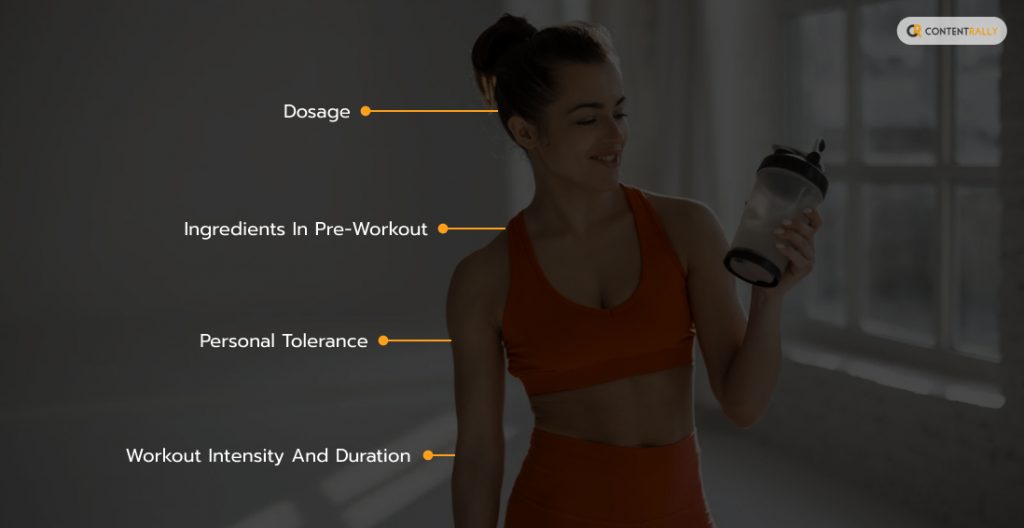
Depending on the amount of pre-workout you consume, you will experience a rise in physical and mental energy for 30 minutes to 2.5 hours. Moreover, the pre-workout stays in your body for a much longer time due to caffeine content.
The following are some of the major factors that influence the amount of time a pre-workout will last:
1. Dosage
The pre-workout dosage affects the amount of time up to which you will experience its benefits. In fact, the more pre-workout you consume, the longer it will have an effect on you.
Moreover, if you take higher doses, your energy levels will remain high between these periods. Also, there shall be lower feelings of exertion. Generally, this is the effect of individual ingredients.
However, always remember to take a dosage that your nutritionist recommends.
2. Ingredients in Pre-Workout
The common ingredients of pre-workouts include caffeine, beta-alanine, creatine, etc. Basically, these ingredients determine the amount of time the pre-workout affects you. In fact, each ingredient offers you something different. Hence, a pre-workout with more than one thing will affect you in different ways.
a. Caffeine
Caffeine is present in multiple beverages, energy drinks, and tea. Generally, you will experience the effects of caffeine for 2.5 to 4.5 hours. However, depending on your personality and your body type, this will vary a bit.
b. Nitrates
Most pre-workout supplements contain nitrates and amino acids. This helps in producing nitrate oxide, which helps to produce a higher amount of oxygen than the body needs during exercise. However, once you consume it, nitrate will remain for 1-3 hours.
c. Beta-alanine
This is a type of amino acid that comes with multiple benefits. However, you must consume it before you start exercising. Such a pre-workout will offer you higher aerobic and anaerobic endurance.
Apart from that, you will benefit from higher muscle mass, better capacity to exercise, and a reduction in lactic acid buildup.
3. Personal Tolerance
If you use pre-workout consistently or for a long period of time, your body will start tolerating it and its effects. Hence, most experts recommend that you use pre-workout in a cycle. For example, you take a pre-workout for six weeks and then take a break of six weeks from using this supplement.
Hence, after you retake a pre-workout later, it will have an effect on your body. This is a useful way to make the most of pre-workouts.
4. Workout Intensity and Duration
The workout length and effort level influence how long the pre-workout lasts. For instance, your body might use up individual ingredients faster when you are in a high-intensity workout.
However, if you resort to lower-intensity training, you will not fully utilize your pre-workout to the fullest. Hence, you will not experience all the benefits it offers. Actually, pre-workout is useful for high-intensity exercises. Apart from that, some studies suggest that if you consume pre-workout before cardio, it will be beneficial for you.
How Long Do Specific Ingredients Last?
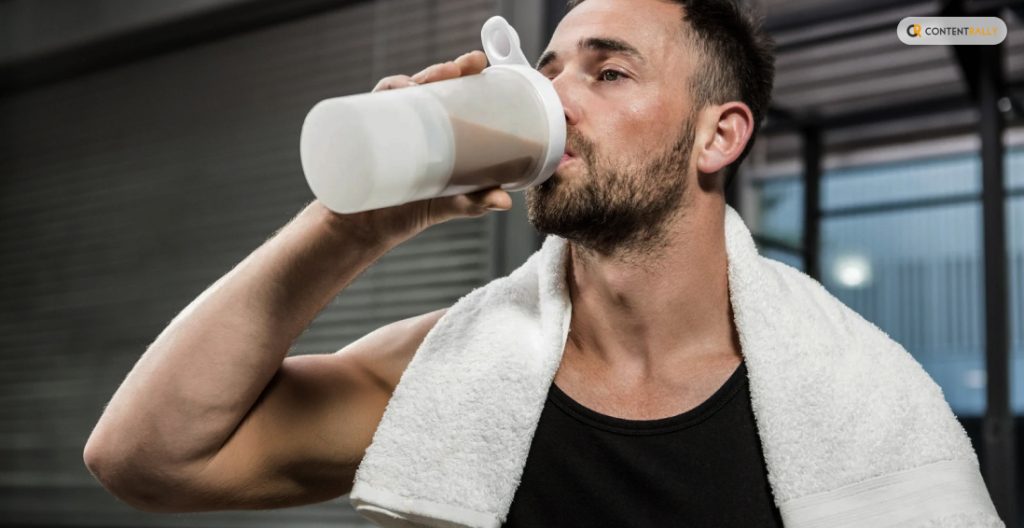
Generally, it depends on the individual when it comes to the duration of specific ingredients like beta-alanine and caffeine can vary a bit. However, in most cases, you can notice the effect of caffeine within 30 minutes to an hour. Also, the effect of caffeine can last for 2-3 hours. This is because caffeine has a half-life of 3-5 hours.
On the other hand, the half-life of beta-alanine is about 25 minutes. Hence, you will experience the effects of beta-alanine for a shorter period of time.
1. Caffeine
Caffeine is the primary stimulant in most pre-workouts. Generally, you will notice its effect for 1-2 hours. Moreover, its half-life can be extended by 3-5 hours. Also, its effect depends on your metabolism and workout intensity.
2. Beta-Alanine
Beta-alanine causes a tingling sensation in your body since your body absorbs it faster. Here, the effect of beta-alanine peaks within 30 minutes. Also, it will last for about 2-3 hours.
3. Creatine
Creatine is actually a muscle-building ingredient. In fact, you need to consistently use it for a few weeks if you want to fully saturate it to muscle stores. Also, its effects last much longer than immediate pre-workouts.
4. Nitric Oxide Boosters
Nitric oxide ingredient in pre-workouts has an effect on blood flow and pump duration. This actually helps you with better endurance levels. Nitric oxide provides more oxygen in your body when your body needs it. In fact, once you consume it, it will peak after 1-3 hours.
How to Maximize the Duration of Pre-Workout?
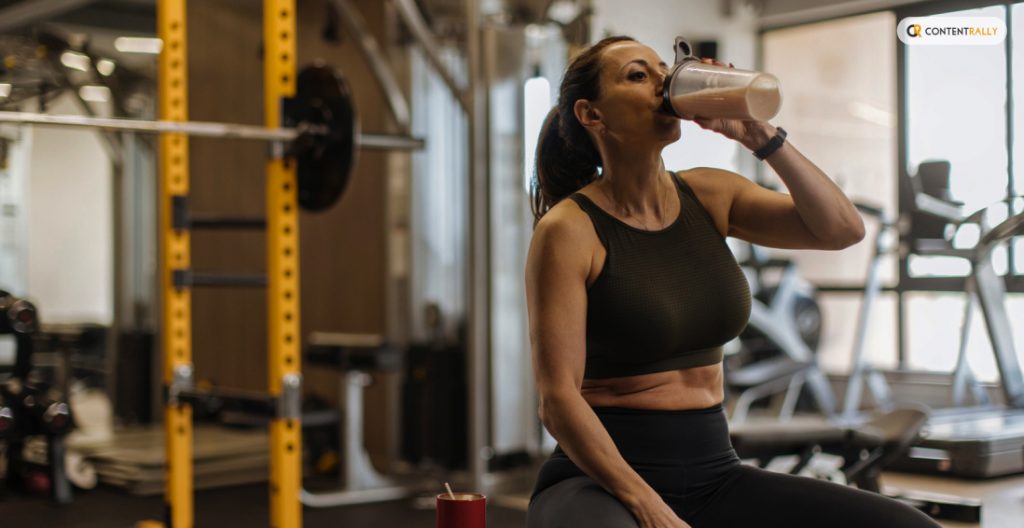
If you want to maximize the duration of your pre-workout, consider taking it around 30 minutes before you start working out. This way, you give your body enough time to absorb all the ingredients inside your pre-workout. Also, you must avoid taking it too early since the effects might diminish before you start your workout.
However, make sure you stick to a dose that is recommended for your case. Apart from that, it is important to hydrate your body. Drink plenty of water during and after the workout. This will maximize the absorption of supplements. Moreover, make sure to choose a pre-workout that has a long-lasting effect (for example, creatine).
On the other hand, try to be mindful of caffeine. Too much caffeine is not good for anyone. Additionally, if you are sensitive to it, adjust your dosage accordingly. However, if you want more energy to sustain in your body, consider consuming a pre-workout with creatine in it.
Potential Side Effects and How They Relate to Duration

The following are some of the potential side effects of pre-workouts:
- headaches
- stomach upset
- nausea
- anxiety
- jitters
- dehydration
- an increase in heart rate
- sleep disturbances
Generally, these side effects vary in terms of intensity depending on the time and duration of use. If you use pre-workouts for the short term, you can see only mild side effects like mild stomach upset, jitters, a little increase in heart rate, etc. These problems go away once the effect of the pre-workout is gone.
On the other hand, if you use pre-workout consistently, there is a greater risk of severe side effects. For instance, you might face caffeine dependence, dehydration, higher blood pressure, heart issues, sleep disruption, etc.
Apart from that, it also depends on the sensitivity of the individual to the ingredients. Moreover, make sure not to take pre-workouts close to your sleep time as it can impact your sleep quality.
What Happens After Pre-Workout Effects Wear Off?

Here are a few things that might happen after your pre-workout wears off:
- You will feel a drop in your energy levels. This may result in a reduction in performance.
- Slight irritability and agitation are common.
Moreover, your individual caffeine sensitivity also determines your loss of energy and performance.
Summing Up
How long does pre workout last? – Now you know the answer to this question. Generally, the effect of pre-workout lasts for 30 minutes to 1 hour. However, it still stays in your body for 3-5 hours. However, these numbers might vary depending on your individual physicality, sensitivity, and metabolism.
Do you have more information to provide regarding the timing and duration of pre-workouts? Please share them in the comments section below.
Read Also:













